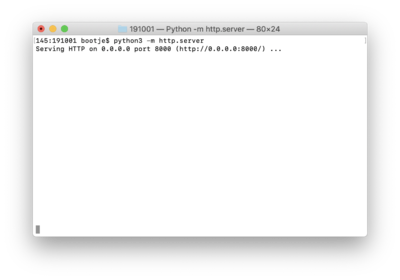User:Bohye Woo/labour experiment
Labour investigation in social media
This is a small prototyping with my personal data created from Facebook and Instagram. I call this experiment as a 'crime scene case' in which I will make an investigation report, it might lead me to start on a new study case. By downloading my personal datas I produced, I would like to delve into investigate what kinds of data I have produced, To create this data what labour is being used, how many time I worked to create them. I will visualize them to see the possibilities of materializing the labour.
Step 1: Extracting && Analyzing my data
What data has been collected? I've collected my 9 years of social media experience in JSON file.
A JSON file that collected my likes on posts
{
"reactions": [
{
"timestamp": 1569322034,
"data": [
{
"reaction": {
"reaction": "LIKE",
"actor": "Bo Woopsie"
}
}
],
"title": "Bo Woopsie likes Roosje Klap's post."
},
{
"timestamp": 1568990971,
"data": [
{
"reaction": {
"reaction": "LIKE",
"actor": "Bo Woopsie"
}
}
],
"title": "Bo Woopsie likes Shinyoung Kim's photo."
},
{
"timestamp": 1568757503,
"data": [
{
"reaction": {
"reaction": "LIKE",
"actor": "Bo Woopsie"
}
}
],
"title": "Bo Woopsie likes Cramer Florian's album: Public Library | Latag."
},
{
"timestamp": 1567672802,
"data": [
{
"reaction": {
"reaction": "LIKE",
"actor": "Bo Woopsie"
}
}
],
"title": "Bo Woopsie likes Michel Hoogervorst's photo."
},
]
}
Step 2: Visualizing my labour
<!DOCTYPE html>
<html>
<head>
<meta charset="utf-8">
<title>Let's publish our labour</title>
<style type="text/css">
svg {
border: 1px solid gray;
}
circle.item {
fill: green;
}
</style>
</head>
<body>
<div id="content"></div>
<svg id="graph" width=5000 height=100></svg>
</body>
<script src="d3/d3.min.js"></script>
<script type="text/javascript">
d3.json ("posts_and_comments.json").then(data => {
console.log("data", data)
let start = d3.min(data.reactions, d=>d.timestamp),
end = d3.max(data.reactions, d=>d.timestamp);
console.log("min", start, "max", end);
let pos = d3.scaleLinear().domain([start, end]).range([0, 5000]);
window.pos = pos;
d3.select("#graph")
.selectAll(".item")
.data(data.reactions)
.enter()
.append("circle")
.attr("cx", d => pos(d.timestamp))
.attr("cy", 10)
.attr("r", 2)
.attr("class", "item")
.append("title")
.text(d => d.title);
//same as: .text(function(d) { return d.title });
})
</script>
</html>
Step 3: Adding more datas to compare different datas
Added 'other_peoples_posts_to_your_timeline.json' & 'likes_on_external_sites.json'
<script type="text/javascript">
d3.json ("posts_and_comments.json").then(data => {
console.log("data", data)
let start = d3.min(data.reactions, d=>d.timestamp),
end = d3.max(data.reactions, d=>d.timestamp);
console.log("min", start, "max", end);
let pos = d3.scaleLinear().domain([start, end]).range([0, 5000]);
window.pos = pos;
d3.select("#graph")
.selectAll(".item")
.data(data.reactions)
.enter()
.append("rect")
.attr("x", d => pos(d.timestamp))
.attr("y", 0)
.attr("width", 2)
.attr("height", 2)
.attr("class", "item")
.append("title")
.text(d => d.title)
//same as: .text(function(d) { return d.title });
})
d3.json ("likes_on_external_sites.json").then(data => {
console.log("data", data)
let start = d3.min(data.other_likes, d=>d.timestamp),
end = d3.max(data.other_likes, d=>d.timestamp);
console.log("min", start, "max", end);
let pos = d3.scaleLinear().domain([start, end]).range([0, 5000]);
window.pos = pos;
d3.select("#graph")
.selectAll(".item2")
.data(data.other_likes)
.enter()
.append("circle")
.attr("cx", d => pos(d.timestamp))
.attr("cy", 10)
.attr("r", 2)
.attr("class", "item2")
.append("title")
.text(d => d.title);
})
d3.json ("other_peoples_posts_to_your_timeline.json").then(data => {
data = data.wall_posts_sent_to_you
console.log("data3", data)
let start = d3.min(data.activity_log_data, d=>d.timestamp),
end = d3.max(data.activity_log_data, d=>d.timestamp);
console.log("min", start, "max", end);
let pos = d3.scaleLinear().domain([start, end]).range([0, 5000]);
window.pos = pos;
d3.select("#graph")
.selectAll(".item3")
.data(data.activity_log_data)
.enter()
.append("circle")
.attr("cx", d => pos(d.timestamp))
.attr("cy", 15)
.attr("r", 2)
.attr("class", "item3")
.append("title")
.text(d => d.title);
})
</script>
Step 4: Writing into a new style of Javascript
I loaded different JSON files every time. What is interesting to see is to see the whole timeline of my labour. Problem of this way of coding is that they're stretched and not in a same scale. To make them in a same timeline, I need to find total minimum and maximam. Therefore I re-write with a new style of Javascript that allows you to write linearly.
New Javascript terms
- Promises
The Promise object represents the eventual completion (or failure) of an asynchronous operation, and its resulting value. instead of immediately returning the final value, the asynchronous method returns a promise to supply the value at some point in the future.
- Async
Async is a utility module which provides straight-forward, powerful functions for working with asynchronous JavaScript.
- Await
The await operator is used to wait for a Promise.
<script type="text/javascript">
async function loaddata () {
var data1 = await d3.json ("posts_and_comments.json"),
data2 = await d3.json ("likes_on_external_sites.json"),
data3 = await d3.json ("other_peoples_posts_to_your_timeline.json");
console.log("loaded", data1, data2, data3);
let start1 = d3.min(data1.reactions, d=>d.timestamp),
end1 = d3.max(data1.reactions, d=>d.timestamp);
console.log("1 min", start1, "max", end1);
let start2 = d3.min(data2.other_likes, d=>d.timestamp),
end2 = d3.max(data2.other_likes, d=>d.timestamp);
console.log("2 min", start2, "max", end2);
data3 = data3.wall_posts_sent_to_you;
let start3 = d3.min(data3.activity_log_data, d=>d.timestamp),
end3 = d3.max(data3.activity_log_data, d=>d.timestamp);
console.log("3 min", start3, "max", end3);
let start = Math.min(start1, start2, start3),
end = Math.max(end1, end2, end3);
let pos = d3.scaleLinear().domain([start, end]).range([0, 5000]);
window.pos = pos;
d3.select("#graph")
.selectAll(".item")
.data(data1.reactions)
.enter()
.append("rect")
.attr("x", d => pos(d.timestamp))
.attr("y", 0)
.attr("width", 2)
.attr("height", 2)
.attr("class", "item")
.append("title")
.text(d => d.title)
//same as: .text(function(d) { return d.title });
d3.select("#graph")
.selectAll(".item2")
.data(data2.other_likes)
.enter()
.append("circle")
.attr("cx", d => pos(d.timestamp))
.attr("cy", 10)
.attr("r", 2)
.attr("class", "item2")
.append("title")
.text(d => d.title);
d3.select("#graph")
.selectAll(".item3")
.data(data3.activity_log_data)
.enter()
.append("circle")
.attr("cx", d => pos(d.timestamp))
.attr("cy", 15)
.attr("r", 2)
.attr("class", "item3")
.append("title")
.text(d => d.title);
}
loaddata()
</script>
Step 5: Creating a list of timestamp: legend
<script type="text/javascript">
let start_date = new Date(start*1000),
end_date = new Date(end*1000);
console.log(start_date, end_date);
let legend_dates = [];
for (let year = start_date.getYear(); year <= end_date.getYear(); year ++) {
legend_dates.push(new Date(1900+year, 0, 1));
}
console.log("legend dates", legend_dates)
d3.select("#graph")
.selectAll("text.legend")
.data(legend_dates)
.enter()
.append("text")
.attr("class", "legend")
.text(d => d.toString());
}
loaddata()
</script>
outcome ex) January 1 in each year legend dates Array (10) 0 Fri Jan 01 2010 00:00:00 GMT+0100 (CET) 1 Sat Jan 01 2011 00:00:00 GMT+0100 (CET) 2 Sun Jan 01 2012 00:00:00 GMT+0100 (CET) 3 Tue Jan 01 2013 00:00:00 GMT+0100 (CET) 4 Wed Jan 01 2014 00:00:00 GMT+0100 (CET) 5 Thu Jan 01 2015 00:00:00 GMT+0100 (CET) 6 Fri Jan 01 2016 00:00:00 GMT+0100 (CET) 7 Sun Jan 01 2017 00:00:00 GMT+0100 (CET) 8 Mon Jan 01 2018 00:00:00 GMT+0100 (CET) 9 Tue Jan 01 2019 00:00:00 GMT+0100 (CET)





